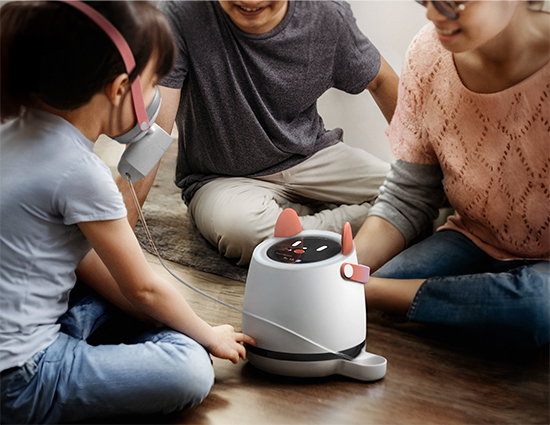In 2011, Netscape founder and venture capitalist Marc Andreessen published a now-famous essay in The Wall Street Journal with a provocative title: Why Software is Eating the World. He outlined how software was transforming industries, particularly those able to harness platform technologies and the ubiquity of the smartphone. However, healthcare received only a passing mention.
Thirteen years later, in April 2024, Alan Cohen from DCVC introduced his TechMed thesis, distinguishing traditional MedTech from a new wave of companies bringing advanced technologies like AI, machine learning and computer vision into healthcare. Now, a quarter of the way through the 21st century, given that software has eaten the world, is software eating the operating room?
In an environment of long innovation cycles, margin pressure and business models that revolve around device sales, how will such a software shift impact how care is delivered and transform the business models of both strategics and start-ups?
Software is here, but is it valuable?
In 2025, many of the devices and technologies that populate our ORs incorporate and run software. And yet, 83% of R&D and clinical leaders could not clearly articulate the transformative value that software or digital products/services brings . In the traditional MedTech model – built on intellectual property (IP), regulatory approval, market access, and reinforced by decades of brand power and commercial access – the vast amounts of data generated in the operating room has yet to translate into significant revenue. Commercial teams are struggling to monetise these innovations, and in most cases, software remains an add-on, something bundled in, that the customer expects but is not yet willing to pay for, certainly not relative to the ‘real product’, i.e. the hardware.
Why? Well, too often, data is viewed as an operational asset, an output, aggregated into vast ‘data lakes’ with limited direct value to customers. I like Cohen’s concept of a ‘data river’, where insights flow dynamically to drive real-time decision-making, but in our work we still see too many ‘muddy puddles’. If software is eating the operating room, the first question is: is anyone willing to pay for it?
What happens when hardware becomes commoditised?
If software were eating the operating room, what would it mean for hardware? Andreessen argued that software eventually absorbs value from industries rooted in the physical world. Now, few industries are as rooted in the physical world as surgery. The contrarian view would argue that the nuances of tissue handling and the difficulties and vagaries of anatomy mean the profits in our industry are justifiably built on the tangible realities of stents, valves, implants, endoscopes, meshes, pacemakers and, yes, surgical robots and their profitable accessories.
MedTech is not tech. Never mind software, platforms or network effects: the counter-argument is that these will remain hardware margin businesses in a physical and physically-demanding environment for many decades to come. Perhaps. And yet, commodification remains a looming challenge.
From hardware to software-first?
In 2005, IBM chose to get out of the consumer hardware game by selling ThinkPad to Lenovo and doubling down on enterprise software, cloud computing and AI. Almost every technology giant has done something similar. Our world of soft-tissue surgical robots is still hardware and architecture-focused, but that is about to change.
Opportunities for differentiation will be in the realm of software. Sneering about copycats may have to give way. Boston Dynamics’ $74,000 Spot dog now competes with Unitree’s Go2 for $1600. Today we have a phone in every pocket. A robot in every operating room is simply a matter of time. If Cohen is correct in describing much of the MedTech’s offering as high-quality commodities, what is preventing a good-enough-quality copycat from becoming a high-quality commodity? Lobbying? Geopolitical tension?
MedTech c-suites are well aware of the conundrum. In one study from 2023, the top three challenges listed by MedTech c-suites were:
- Margin pressure, reduction in cost of goods sold
- Digital and AI-based offerings and services
- Need to drive innovation for differentiation
So what happens when a software-powered revolution in the operating room meets with business models based on selling hardware products? I would argue that no. 2, although viewed as a challenge, could be a solution to nos. 1 and 3, but only if there is clear value and not just more data. In a world where margins are being squeezed for both hospitals and device companies, and where long-term differentiation may be at risk, the power of software lies in its ability to scale, iterate and generate recurring revenue, whereas hardware, beholden to long innovation cycles, no matter how advanced, risks becoming commoditised.
At the recent DeviceTalks Boston event, Zimmer Biomet CEO Ivan Tornos explained how he is seeking to transform a company currently reliant on implants for 80% of its revenue. He recognises we are in a transitional period. Executives like Tornos are alert to the challenge of whether companies that monetise device sales can also become software-and platform-centric. Will MedTech (‘product companies that monetise device sales’) get its lunch eaten by TechMed (‘fundamentally software- and platform-centric’) or will a happy coexistence emerge?
The industrial revolution of the operating room?
I’ll end on a provocative note. For all the smart devices populating the operating room, it remains in many respects a pre-industrial environment. Robots are the looms that leave us in the early stages of mechanisation. Surgeons remain highly skilled craftspeople, largely disconnected and unstandardised. As technology advances in other parts of our world, how long can the entrenched realities of the MedTech model hold?
Commodification remains a looming threat. Hardware margins will be squeezed. c-suites know they must act. Who is bold enough to leave those businesses behind in favour of an initially painful transition? The winners in this transformation will be those who recognise that data is more than an operational byproduct. Companies that successfully integrate software not just into the technology but into their core business models, adopt platform thinking, and create value through network effects have the potential to define the future of surgery.





